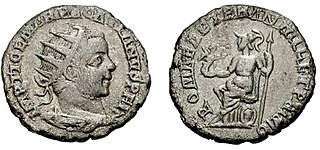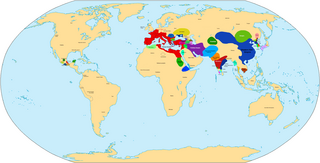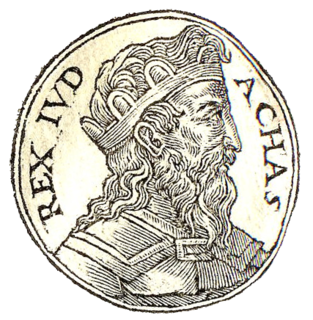Births
| | This section is empty. You can help by adding to it. (June 2021) |
| Millennium: | 1st millennium BC |
|---|---|
| Centuries: | |
| Decades: | |
| Years: |
| 716 BC by topic |
| Politics |
|---|
| Categories |
| Gregorian calendar | 716 BC DCCXV BC |
| Ab urbe condita | 38 |
| Ancient Egypt era | XXV dynasty, 37 |
| - Pharaoh | Shabaka, 6 |
| Ancient Greek era | 16th Olympiad (victor )¹ |
| Assyrian calendar | 4035 |
| Balinese saka calendar | N/A |
| Bengali calendar | −1308 |
| Berber calendar | 235 |
| Buddhist calendar | −171 |
| Burmese calendar | −1353 |
| Byzantine calendar | 4793–4794 |
| Chinese calendar | 甲子年 (Wood Rat) 1981 or 1921 — to — 乙丑年 (Wood Ox) 1982 or 1922 |
| Coptic calendar | −999 – −998 |
| Discordian calendar | 451 |
| Ethiopian calendar | −723 – −722 |
| Hebrew calendar | 3045–3046 |
| Hindu calendars | |
| - Vikram Samvat | −659 – −658 |
| - Shaka Samvat | N/A |
| - Kali Yuga | 2385–2386 |
| Holocene calendar | 9285 |
| Iranian calendar | 1337 BP – 1336 BP |
| Islamic calendar | 1378 BH – 1377 BH |
| Javanese calendar | N/A |
| Julian calendar | N/A |
| Korean calendar | 1618 |
| Minguo calendar | 2627 before ROC 民前2627年 |
| Nanakshahi calendar | −2183 |
| Thai solar calendar | −173 – −172 |
| Tibetan calendar | 阳木鼠年 (male Wood-Rat) −589 or −970 or −1742 — to — 阴木牛年 (female Wood-Ox) −588 or −969 or −1741 |
The year 716 BC was a year of the pre-Julian Roman calendar. In the Roman Empire, it was known as year 38 Ab urbe condita . The denomination 716 BC for this year has been used since the early medieval period, when the Anno Domini calendar era became the prevalent method in Europe for naming years.
| | This section is empty. You can help by adding to it. (June 2021) |

Ab Urbe condita, or Anno Urbis conditae, abbreviated as AUC or AVC, expresses a date in years since 753 BC. It is an expression used in antiquity and by classical historians to refer to a given year in Ancient Rome. In reference to the traditional year of the foundation of Rome, the year 1 BC would be written AUC 753, whereas 1 AD would be AUC 754. The foundation of the Roman Empire in 27 BC would be AUC 727.
The Julian calendar, proposed by Julius Caesar in AUC 708, was a reform of the Roman calendar. It took effect on 1 January AUC 709 , by edict. It was designed with the aid of Greek mathematicians and astronomers such as Sosigenes of Alexandria.

The Roman calendar was the calendar used by the Roman kingdom and republic. The term often includes the Julian calendar established by the reforms of the dictator Julius Caesar and emperor Augustus in the late 1st century BC and sometimes includes any system dated by inclusive counting towards months' kalends, nones, and ides in the Roman manner. The term usually excludes the Alexandrian calendar of Roman Egypt, which continued the unique months of that land's former calendar; the Byzantine calendar of the later Roman Empire, which usually dated the Roman months in the simple count of the ancient Greek calendars; and the Gregorian calendar, which refined the Julian system to bring it into still closer alignment with the tropical year.

AD 1 (I), 1 AD or 1 CE is the epoch year for the Anno Domini calendar era. It was the first year of the Common Era (CE), of the 1st millennium and of the 1st century. It was a common year starting on Saturday or Sunday, a common year starting on Saturday by the proleptic Julian calendar, and a common year starting on Monday by the proleptic Gregorian calendar. In its time, year 1 was known as the Year of the Consulship of Caesar and Paullus, named after Roman consuls Gaius Caesar and Lucius Aemilius Paullus, and less frequently, as year 754 AUC within the Roman Empire. The denomination "AD 1" for this year has been in consistent use since the mid-medieval period when the anno Domini (AD) calendar era became the prevalent method in Europe for naming years. It was the beginning of the Christian/Common era. The preceding year is 1 BC; there is no year 0 in this numbering scheme. The Anno Domini dating system was devised in AD 525 by Dionysius Exiguus.
The year 715 BC was a year of the pre-Julian Roman calendar. In the Roman Empire, it was known as year 39 Ab urbe condita. The denomination 715 BC for this year has been used since the early medieval period, when the Anno Domini calendar era became the prevalent method in Europe for naming years.
The proleptic Julian calendar is produced by extending the Julian calendar backwards to dates preceding AD 8 when the quadrennial leap year stabilized. The leap years that were actually observed between the implementation of the Julian calendar in 45 BC and AD 8 were erratic: see the Julian calendar article for details.
The 8th century BC started the first day of 800 BC and ended the last day of 701 BC. The 8th century BC is a period of great change for several historically significant civilizations. In Egypt, the 23rd and 24th dynasties lead to rule from Nubia in the 25th Dynasty. The Neo-Assyrian Empire reaches the peak of its power, conquering the Kingdom of Israel as well as nearby countries.
In chronology and periodization, an epoch or reference epoch is an instant in time chosen as the origin of a particular calendar era. The "epoch" serves as a reference point from which time is measured.
This article concerns the period 719 BC – 710 BC.
Year 46 BC was the last year of the pre-Julian Roman calendar. At the time, it was known as the Year of the Consulship of Caesar and Lepidus. The denomination 46 BC for this year has been used since the early medieval period, when the Anno Domini calendar era became the prevalent method in Europe for naming years.
Year 45 BC was either a common year starting on Thursday, Friday or Saturday or a leap year starting on Friday or Saturday and the first year of the Julian calendar and a leap year starting on Friday of the Proleptic Julian calendar. At the time, it was known as the Year of the Consulship of Caesar without Colleague. The denomination 45 BC for this year has been used since the early medieval period, when the Anno Domini calendar era became the prevalent method in Europe for naming years.
Year 38 BC was either a common year starting on Sunday or Monday or a leap year starting on Saturday, Sunday or Monday of the Julian calendar and a common year starting on Sunday of the Proleptic Julian calendar. At the time, it was known as the Year of the Consulship of Pulcher and Flaccus. The denomination 38 BC for this year has been used since the early medieval period, when the Anno Domini calendar era became the prevalent method in Europe for naming years. It was also the first year of the Spanish era calendar in use in Hispania until the 15th century.

Ahaz an abbreviation of Jehoahaz II, "Yahweh has held" was the twelfth king of Judah, and the son and successor of Jotham. Ahaz was 20 when he became king of Judah and reigned for 16 years.
The year 717 BC was a year of the pre-Julian Roman calendar. In the Roman Empire, it was known as year 37 Ab urbe condita. The denomination 717 BC for this year has been used since the early medieval period, when the Anno Domini calendar era became the prevalent method in Europe for naming years.
A calendar era is the period of time elapsed since one epoch of a calendar and, if it exists, before the next one. For example, the Gregorian calendar numbers its years in the Western Christian era.

The Parilia is an ancient Roman festival of rural character performed annually on 21 April, aimed at cleansing both sheep and shepherd. It is carried out in acknowledgment to the Roman deity Pales, a deity of uncertain gender who was a patron of shepherds and sheep.

The Kings of Judah were the monarchs who ruled over the ancient Kingdom of Judah. According to the biblical account, this kingdom was founded after the death of Saul, when the tribe of Judah elevated David to rule over it. After seven years, David became king of a reunited Kingdom of Israel. However, in about 930 BCE the united kingdom split, with ten of the twelve Tribes of Israel rejecting Solomon's son Rehoboam as their king. The tribes of Judah and Benjamin remained loyal to Rehoboam, and re-formed the Kingdom of Judah, while the other entity continued to be called the Kingdom of Israel, or just Israel.
The Holocene calendar, also known as the Holocene Era or Human Era (HE), is a year numbering system that adds exactly 10,000 years to the currently dominant numbering scheme, placing its first year near the beginning of the Holocene geological epoch and the Neolithic Revolution, when humans transitioned from a hunter-gatherer lifestyle to agriculture and fixed settlements. The current year by the Gregorian calendar, AD 2021, is 12021 HE in the Holocene calendar. The HE scheme was first proposed by Cesare Emiliani in 1993.
The year zero does not exist in the Anno Domini (AD) system commonly used to number years in the Gregorian calendar and in its predecessor, the Julian calendar. In this system, the year 1 BC is followed by AD 1. However, there is a year zero in astronomical year numbering and in ISO 8601:2004, as well as in most Buddhist and Hindu calendars.
The Gregorian calendar is the calendar used in most of the world. It was introduced in October 1582 by Pope Gregory XIII as a minor modification of the Julian calendar, reducing the average year from 365.25 days to 365.2425 days, and adjusting for the drift in the 'tropical' or 'solar' year that the inaccuracy had caused during the intervening centuries.